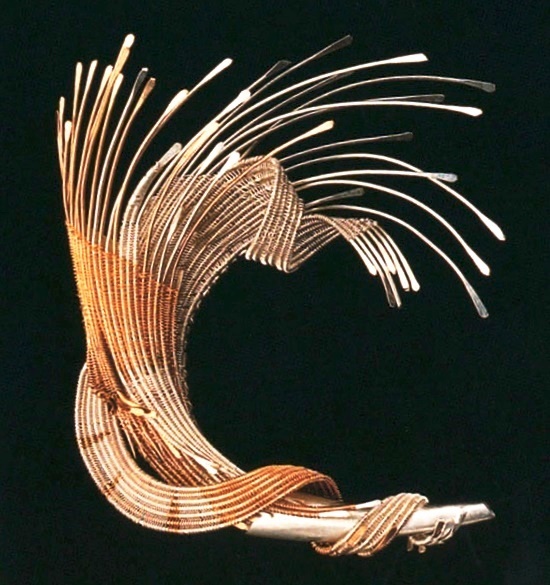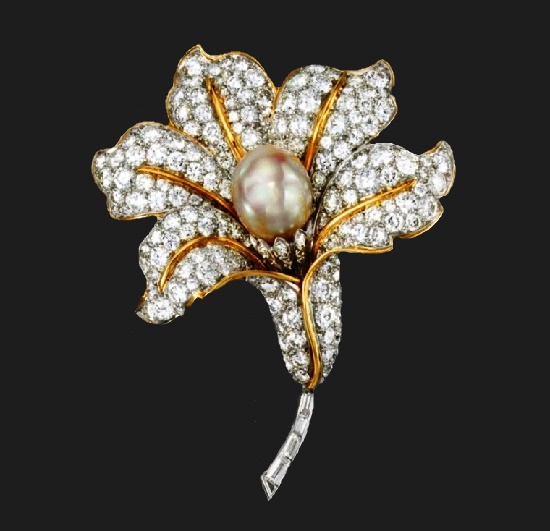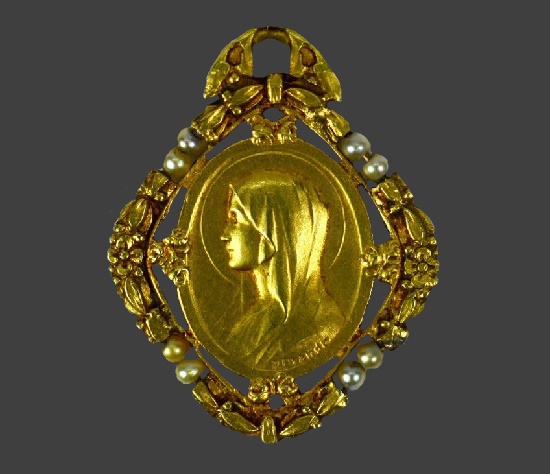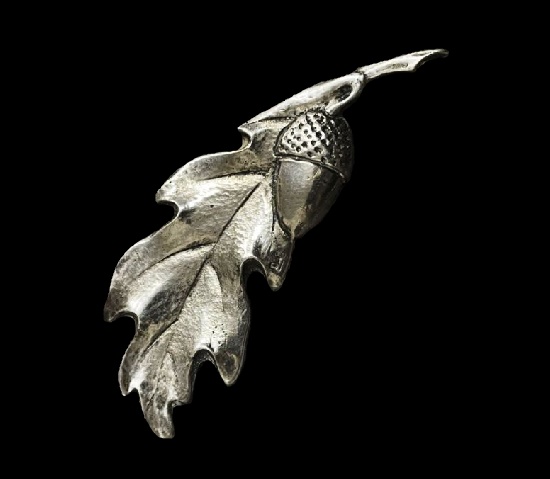Vicki Eisenfeld Vintage Fine Art Jewelry

Brooch. 14k and 22k golds, sterling silver, fine silver; Mixed metals and wire work. 1988. Vicki Eisenfeld Vintage Fine Art Jewelry
Vicki Eisenfeld Vintage Fine Art Jewelry
For nearly 50 years, Vicki Eisenfeld has run a studio at the Farmington Valley Art Center in West Hartford, Connecticut, which she founded in the 1980s. She studied Fine Art in Carnegie Mellon University and for some years continued to study jewelry and improve her skills in working with metal and stones.
The combination of metals in one product, which created an unusual texture and play of color, became most popular in the late 1970s. Vicki Eisenfeld was one of several American designers who embodied their artistic vision in the intricate technique of integrating metals using high-carat gold.
Created in the 1980s-1990s, Eisenfeld’s jewelry resembles weaving, where instead of a thread, the designer uses precious wire made of pink, yellow and white gold of 14, 18 and 22 carats.
In addition to gold, Eisenfeld uses sterling and pure silver, expanding the range of white shades in contrast with gold. The combination of different techniques makes these products extremely complex in design and execution.
According to the designer, what inspires her most is art and design, the beauty and complexity of ancient cultures. In addition to gold and silver of different colors and samples, she uses precious stones, agates, pearls and beads from all over the world. Her pieces are patterned, complex, intense and multi-layered beauty puzzles.
Today, wearable artworks created by many-awarded artist jeweler Vicki Eisenfeld has been featured in many art museums and galleries in the USA.
More »





